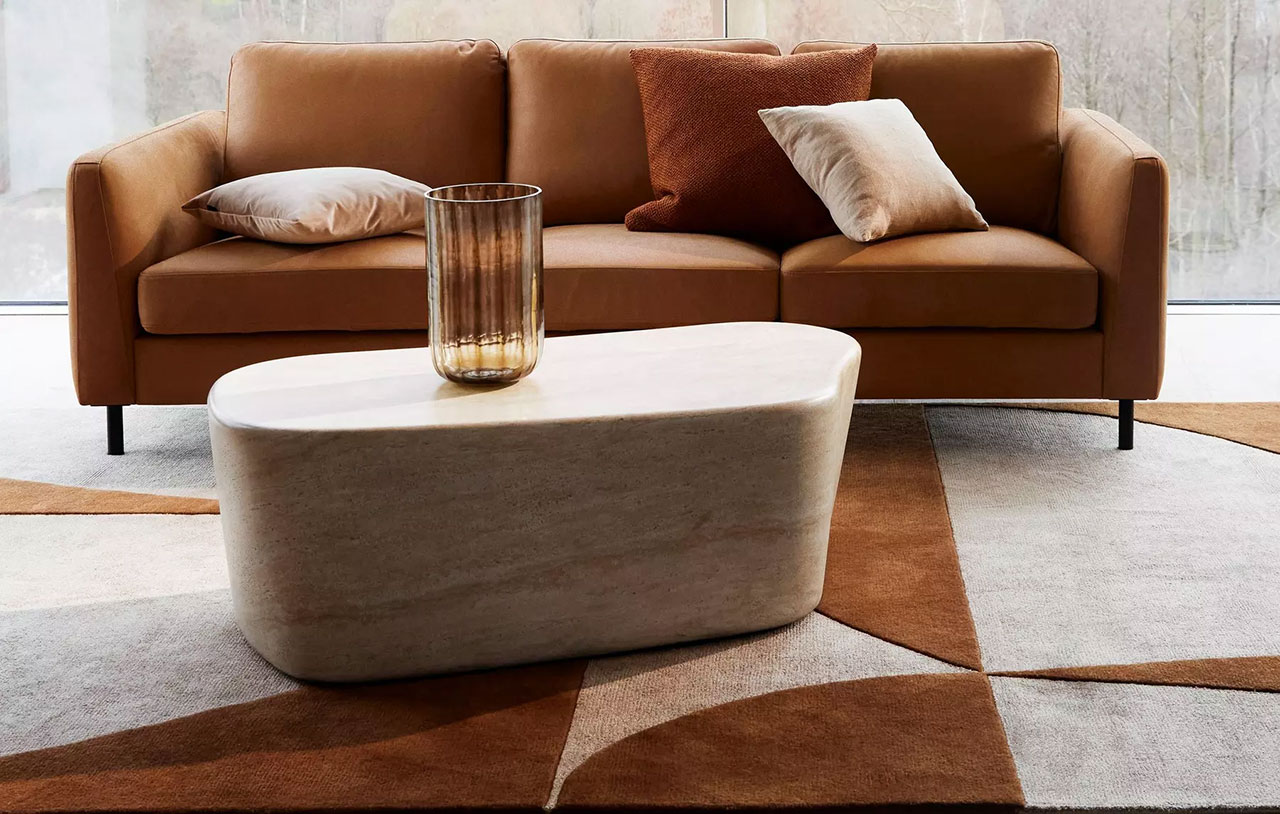Morten Georgsen has a quintessentially Scandinavian “no-nonsense” attitude when it comes to design. In fact, the Danish designer characterizes his work as “the art of finding the shortest distance between function and aesthetics”. With his latest launch, Tivolia mini capsule collection of shaped coffee tables for BoConceptGeorgsen embodies this philosophy with a surprising detail that will shock most people.
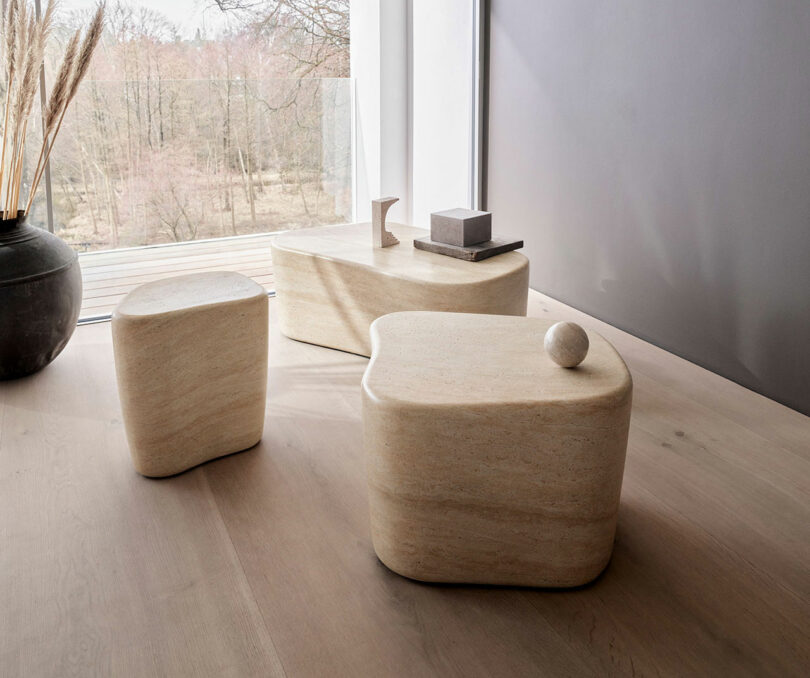
At first glance, the Tivoli tables look like heavy travertine slabs, freshly carved from an Italian quarry. But closer inspection reveals a clever disguise: the tables are actually made of concrete and have been covered with a printed travertine surface that mimics the original. Unlike engineered stone finishes that look too artificial, this unique coating mimics the natural patterns and textures of travertine. Georgsen's use of alternative materials offers the timeless appeal of stone but without its heavy weight, allowing you to move the pieces around your space as needed.
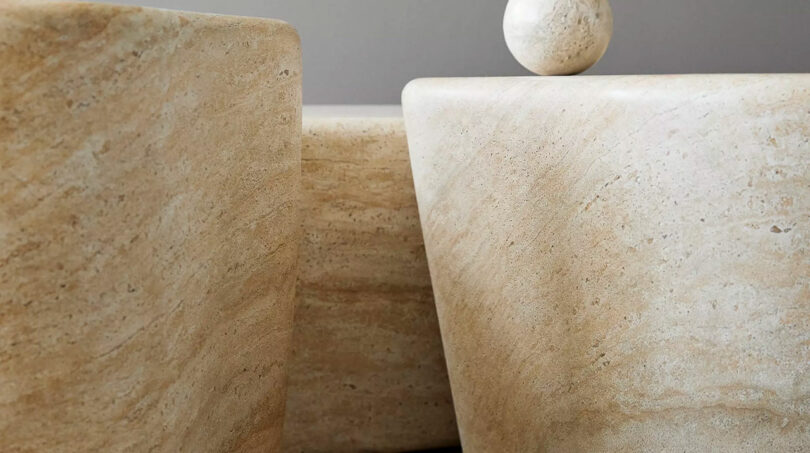
We were curious about the production process and asked Georgsen to tell us how the Tivoli tables were created. His answers – from the original inspiration to the techniques used to create the collection – might surprise you.
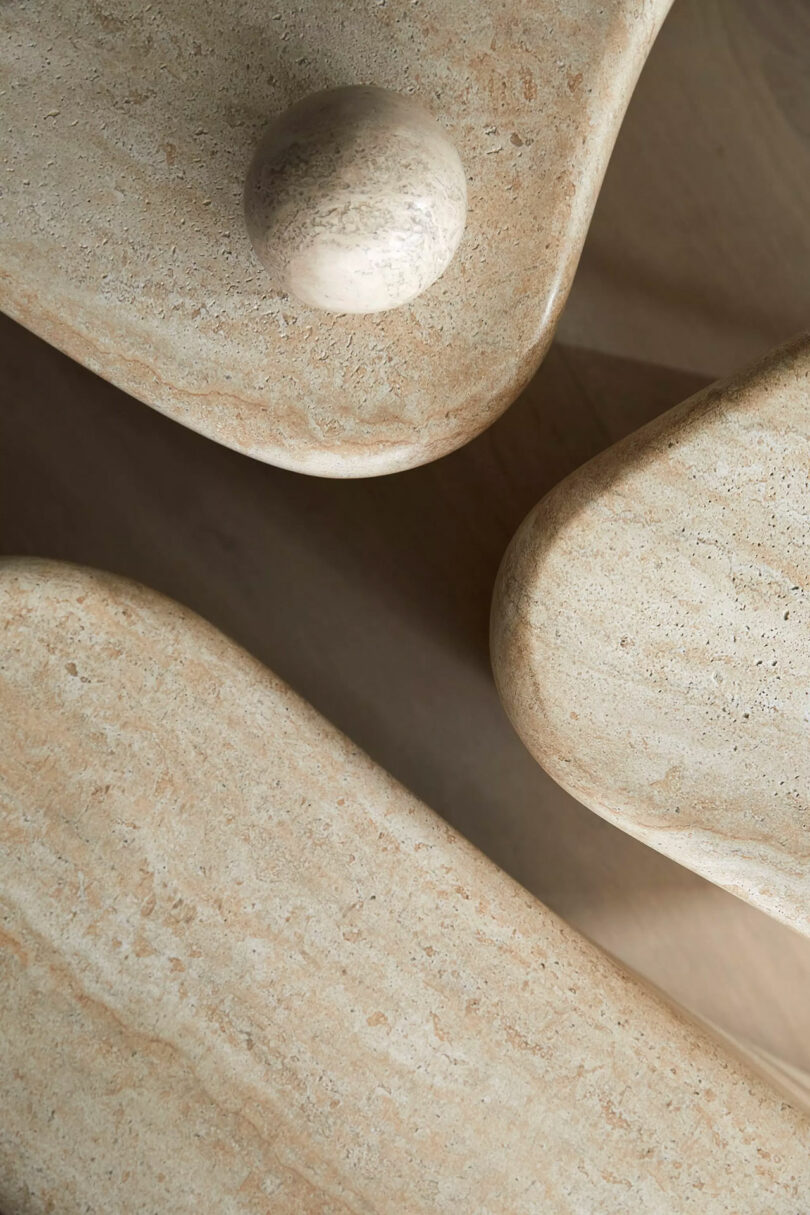
What inspired you to reinterpret Play-Doh creations as a concept for the Tivoli table designs?
I love your Play-Doh association – actually you’re not that far off. My father ran a small art gallery and was a part-time painter. We had some interesting people visiting. Among them was Joern Nash, the brother of the famous Cobra painter Asger Jorn, infamous for the beheading of Denmark's most famous sculpture – The Little Mermaid – created based on a story by HC Andersen. Playing with clay and creating small sculptures was a daily pleasure during my childhood.
When I realized the capabilities of concrete and how I could create different shapes, I thought about my childhood and clay. And having been a furniture designer for more than 30 years, the idea of harnessing the material's “forming” benefits to create practical and attractive furniture became an obsession.
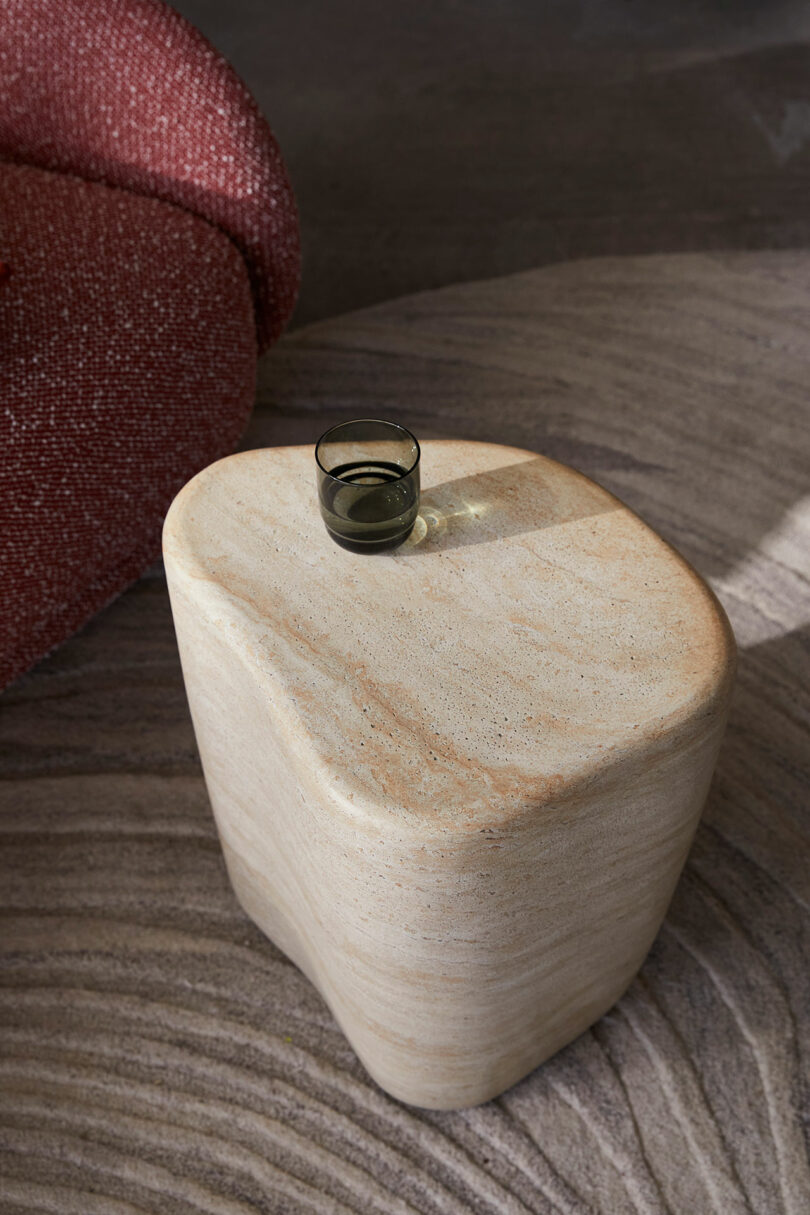
What was the process of making the concrete tables with a printed travertine effect? What challenges or surprises were there while working through the production process?
The process itself has already been tried before. However, our demands on the production process were very excessive. We wanted the furniture pieces to be hollow to minimize weight as you can't move a solid travertine/marble table of this size. We wanted the top and sides to meet so that the transition was imperceptible/not noticeable, and we wanted all the pieces to be unique – like real travertine. We worked closely with the factory and made many samples. Today we can look at models produced that are absolutely stunning and bring to life the images I had imagined before starting the project.
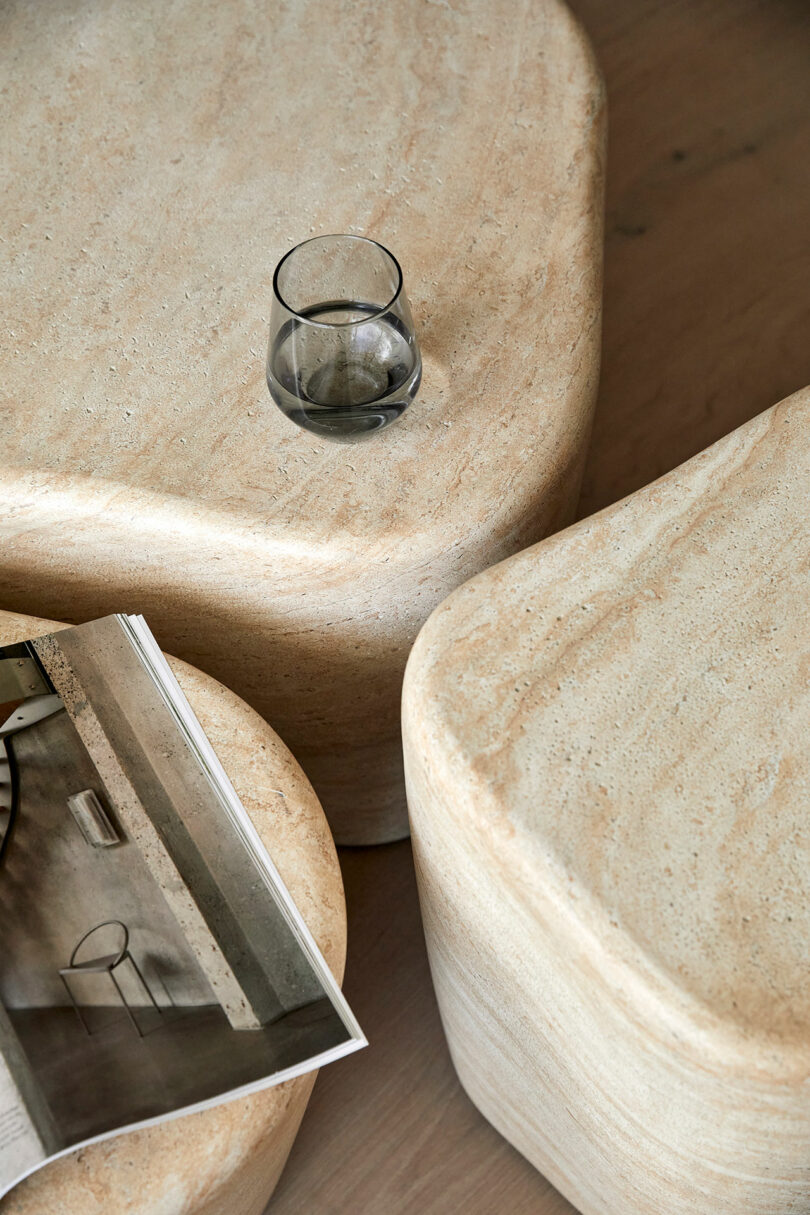
With Tivoli's bold architectural flair, how did you balance sculptural design with functional versatility, especially given your interest in multifunctional furniture?
As previously mentioned, the weight of the items was an important feature for functionality. The smallest of the three is typically used for various purposes and is easy to move.
The surface of the material used is very durable and much more practical than travertine.
I have designed three different sizes and shapes so that you can use them for compact living or combine them in different ways and put them together cohesively depending on your space and needs. I didn't want the individual pieces to fit together like a puzzle, but I did want to give them an organic style so that they fit together in perfect imperfection.
Customization in terms of space, style and functions is very important for BoConcept and in my design for them. Travertine is considered an ever-modern and classic pattern/color that fits any style and environment. The longevity of a product is probably the best measure of sustainability. And I'm pretty sure that with these qualifications Tivoli will stand the test of time.
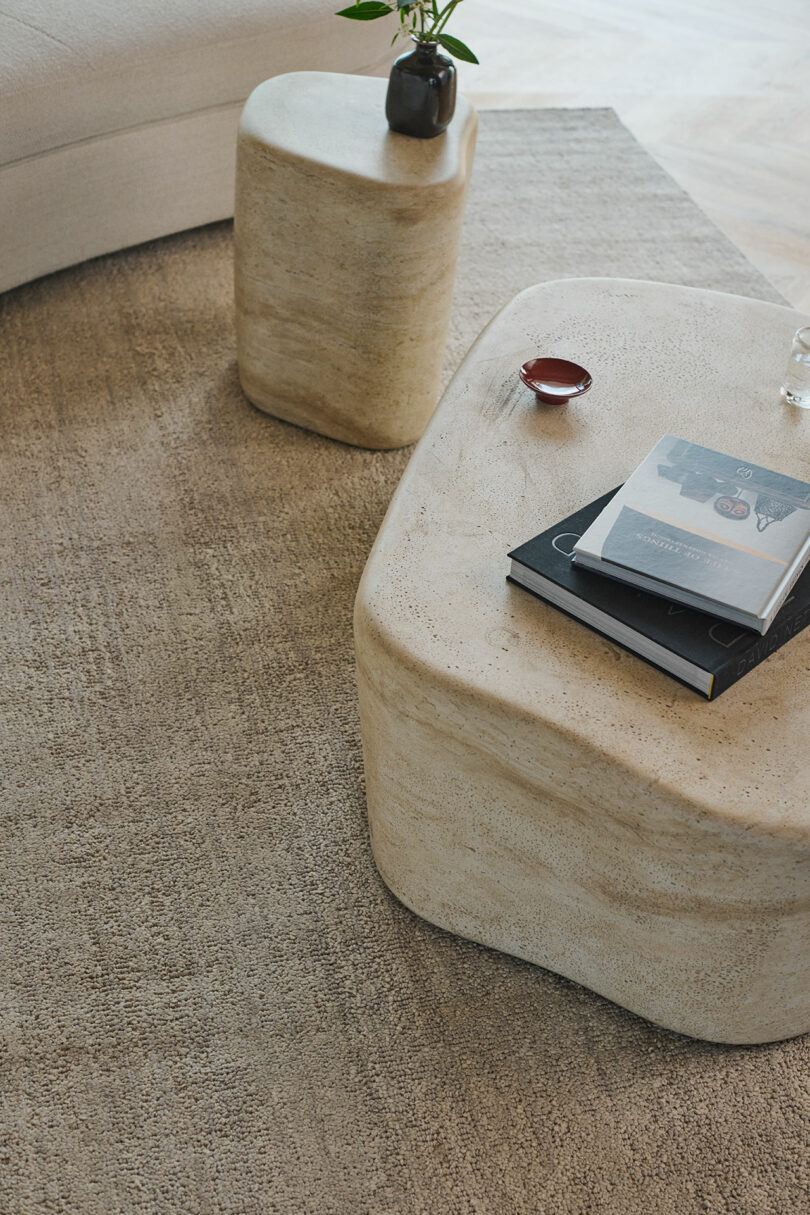
How does this collection embody or depart from your previous work with BoConcept?
At Morten Georgsen Studio we have always tried to open new doors by collaborating with the BoConcept design team. We challenge them and they challenge us. Therefore, using new materials and creating a novel design language is an inspiring and creative way to work with BoConcept. In fact, some of the most successful collections we have made for them incorporate new materials such as ceramics, to name just one.

How do you see your Danish roots and Spanish influences merging in this collection? Are there any cultural or stylistic influences that influenced the design?
BoConcept's design philosophy and DNA are very much in line with mine. It has Danish roots with an international approach and touch. Living in Spain and having my studio here has certainly opened my eyes to other influences. My view of minimalism has probably changed a bit, although I always start a project with the core version of a design (and teach the designers in the studio to do the same). This is also an excellent way to save materials and thus practice sustainability.
Danish design culture also features aspects of sculptural and organic forms. Finn Juhl and Verner Panton come to mind. I find inspiration all over the world and feel every little detail with my senses. I think the biggest inspiration I get from Spain is the beautiful light and the lifestyle.
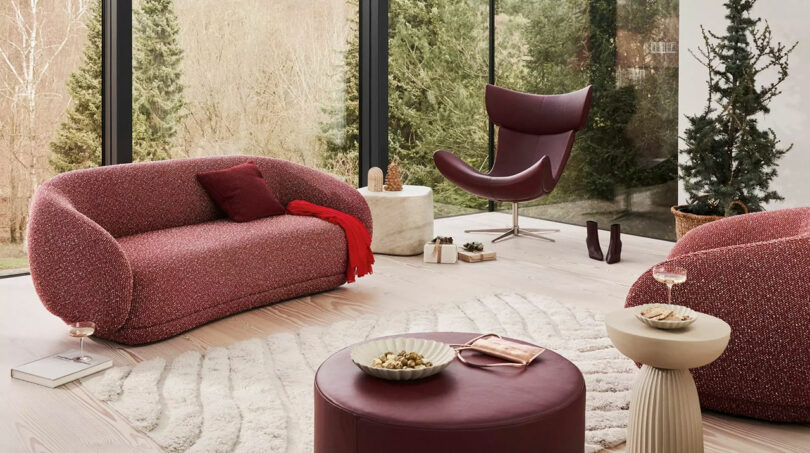
What role did the material and color selection play in the design of the Tivoli table collection and how did you choose the specific travertine surface?
I have already commented on the characteristics of modern, classic travertine and the associated longevity benefits. But as you suggest in your question, travertine comes in many “varieties”. I chose to get close to authentic Roman travertine with very little yellow content. I felt that too much yellow would make it difficult to combine the collection with other materials such as wood and fabrics, so the yellow was toned down to beige. The end result looks like a beautiful travertine found in Rome.
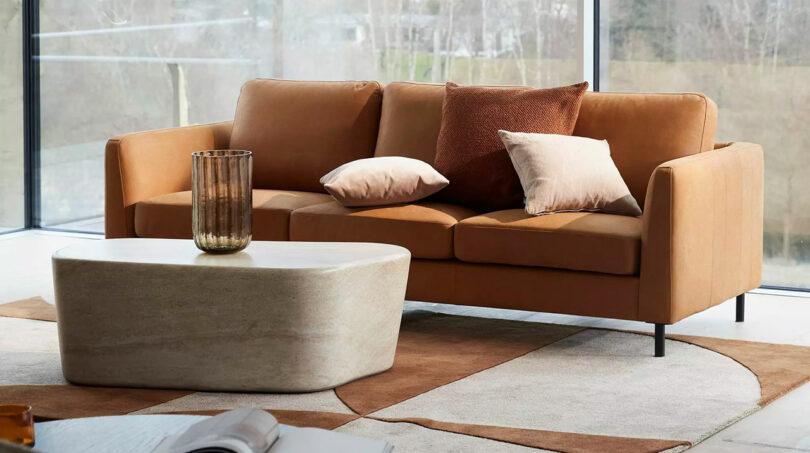
Tivoli is available in three different shapes and creates the perfect balance between individuality and harmony. Whether styled individually or grouped into an “island” of tables, these pieces are ready to add a sculptural, architectural presence to your space.
To learn more about Morten Georgsen's Tivoli tables for BoConcept, visit boconcept.com.
